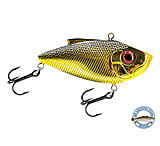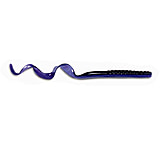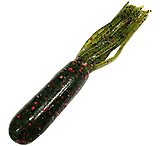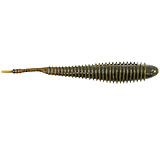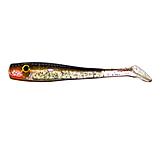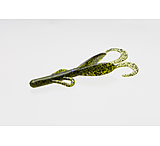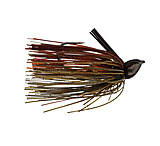Baits & Lures On Sale Up to 79% Off from Top Brands including Zoom, Culprit, Chompers, Strike King and More! — 3,632 products / 32,473 models — Page 1
Whether you intend to unwind on a tranquil lake or battle with an aggressive fish that knows how to put up a fight, knowing what kind of bait and lures can help you prepare for an excellent day of fishing. If you're a beginner fisherman, you'll want to know about the different types of lures available: natural bait, lures, artificial flies, and cut bait. There are thousands of colors and designs to choose from, all in different sizes. Building the perfect fishing tackle box depends on a few various factors:![]()
- Where you're fishing?
- What are you fishing for?
- How often do you go fishing?
- How far do you have to travel to get there?
Artificial lures are a great alternative to live bait. These lures come in many shapes and sizes and are usually made of plastic. The different shapes and sizes resemble live species, and you can find just about any bait for whatever you're fishing for.
Lures are a great alternative to natural bait. While they look like live bait, they are much easier to use. Lures are more portable and can be easily stowed in your tackle box. Lures are also reusable, at least until a fish swims away with them. Of course, there are disadvantages to using lures. Most lures don't come with the smell of live bait. This means you'll have to trick the fish into thinking the lures are real. Some lures, such as leeches, come coated, so they smell like the real thing.
Are Lures and Baits the Same?
A fishing lure is an artificial fishing bait used to attract fish. At the same time, bait is any substance, especially food, used to catch fish by alluring them to a hook, snare, trap, or net. Lures come in many different shapes, sizes, and colors, each designed to attract a specific range of fish species. Lures allow you to cast further than using live bait, and they're less messy.
There are several different types of lures:
- Plugs or Crankbaits: Hard plastic fishing lures shaped and colored to resemble baitfish or other prey.
- Jigs: They will have a feather skirt or plastic grub; jigs are generally considered one of the most popular fishing lures. Thanks to their weight, jigs sink quickly. This makes them great for bottom feeders.
- Spinnerbait: Spinnerbaits spin in the water, attracting predatory fish such as perch, pike, and bass.
- Spoons: Fishing spoons look like our eating spoons with a concave shape. Spoon lures work by reflecting light that imitates swimming baitfish. Spoons work best for larger fish species such as northern pike, largemouth bass, muskies, walleye, salmon, and trout.
- Soft Plastics: Soft plastic lures act like realistic bait and can come in many colors and types of opacity. Depending on the color of the bait that you choose can be used for different fish species from crapppie or catfish. Soft plastic bait can be used in most types of bodies of water.
- Flies:Check out our category on the Fly Fishing Flies
What Fish Are Attracted to Lures?
Depending on the type of lures you use, you'll catch different types of fish. Crankbait lures are the lures of choice for bass anglers who need to cover water quickly and explore various depths. The reflectiveness of spinner bait lures and spoons in the water makes them look like minnow or shiner fish, attracting predatory fish such as bass and pike. Spoons are used for fishing on top of submerged weeds for trout, pike, musky, and bass in freshwater. In saltwater, spoons are used to catch striped bass, mackerel, bluefish, trout, jacks, and others. Jigs are weighted hooks with a lead head opposite the sharp tip. They usually have a minnow or crawfish or even a plastic worm on them to get the fish's attention. Deepwater jigs are used in saltwater fishing and have a hefty weight, making the lure look like a baitfish. Jig lures are very effective at catching freshwater bass and other larger fish.
Shop Bait & Lures at CampSaver!
Before your next fishing trip, make sure that you learn about what kind of fishing you'll be doing so you'll be able to make the best kind of decision to catch the big one! When choosing lure size and weight, be sure to factor in water conditions. For instance, a heavier lure is ideal for fishing in stronger currents and on windy days. Lightweight lures are typically better for calmer conditions. Lure color is another crucial factor. For instance, in murky or muddy lake water, a brightly colored lure can help attract fish more successfully. In crystal-clear waters, on the other hand, a lure that is too brightly colored may spook fish.



























